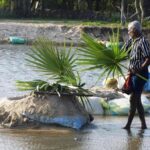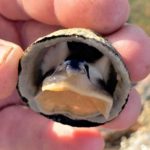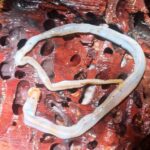Pipi clams (Donax deltoides) are also known as Surf clams, Sandy Donax, and a wide range of other common names. In Thailand, they can be found on most beaches in the Gulf of Thailand and the Andaman Sea. They are called ‘Surf clams’ because they prefer sandy beaches with good surf.
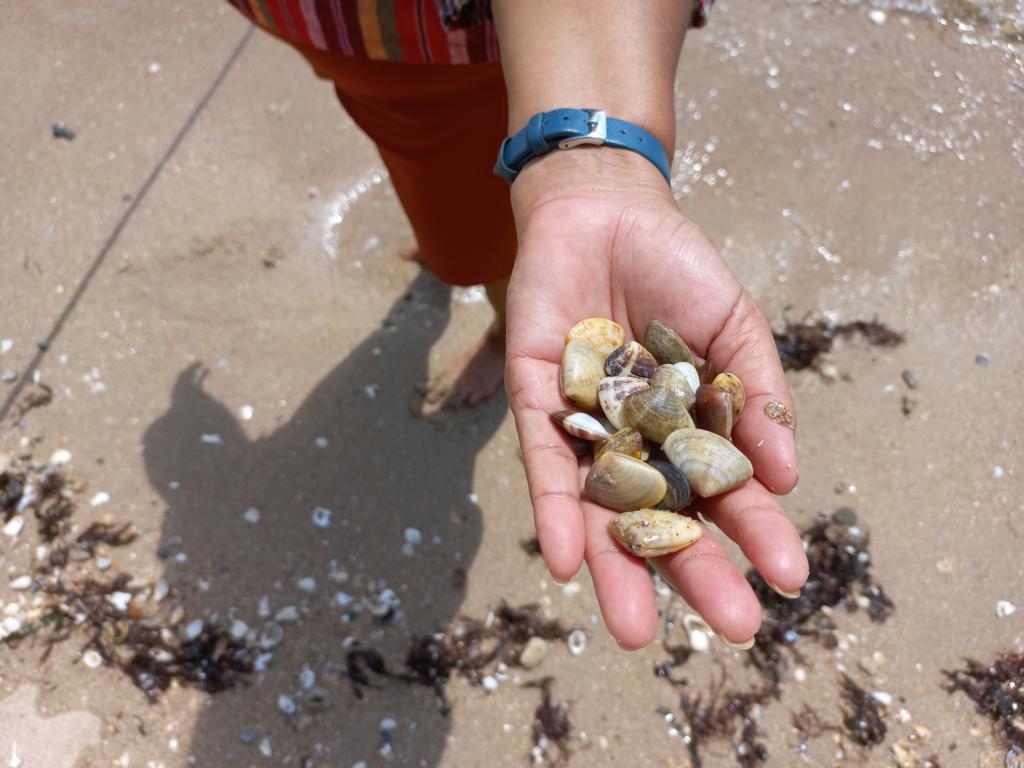
Description and Distribution
These mollusks are small edible saltwater clams with shell widths between 15 and 25mm / 0.6 and 1 ’’. The outer shell surface is smooth with distinctive growth rings. The shells are robust and rugged, which has led to many shell middens on Australian coasts. Their coloration usually is cream to pale brown and sometimes radially stripped—see attached photos.
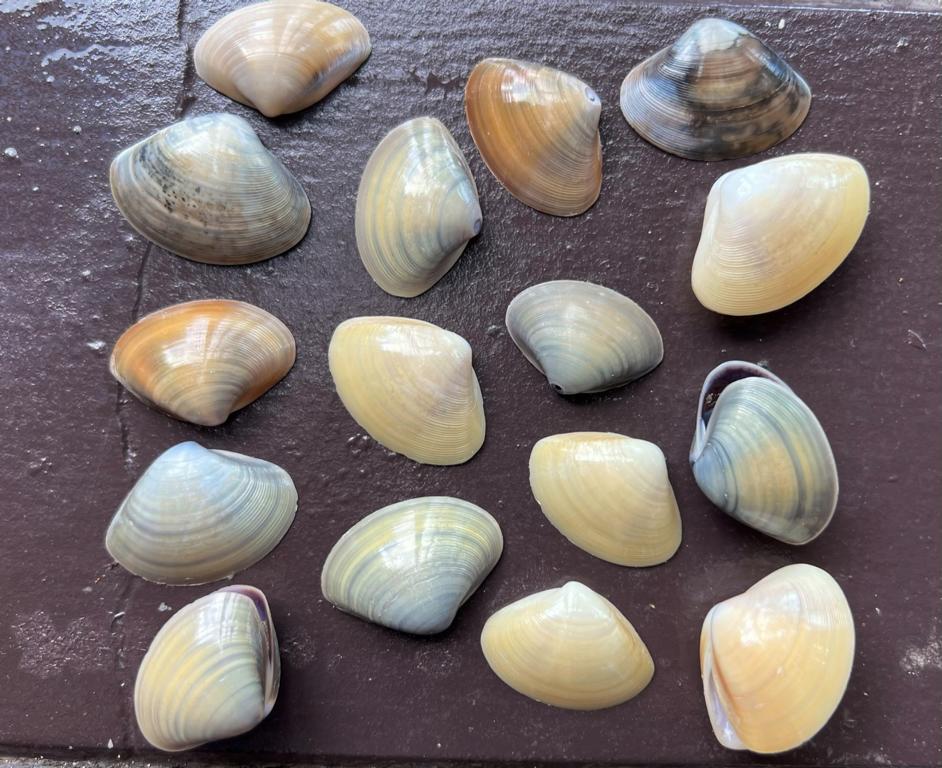
The various species of Donax can be found circumpolar on tropical and temperate beaches. In Asia-Pacific, they occur from the East coast of India via Southeast Asia to Papua New Guinea and down the East coast of Australia until Tasmania. These are the shores of the Eastern Indian Ocean and the Western Central- and Southwest Pacific. A more detailed description of Pipi clams can be found at this link or another link here.
Behavior of Pipi clams
Pipi clams live preferably in the intertidal zone of sandy beaches roughly 10cm / 4’’ below the surface. They are filter feeders and live in high-concentration patches in the sand. When the waves wash these small clams out of the sand, they will dig back in again rapidly. Pipi clams also use the action of waves to move themselves up and down the beach, quickly burrowing into a new location before they can be swept away.
How to find and collect them at Rawai Beach
Shells of dead Pipi clams are a good indication of their occurrence. At low tide, a shallow hole should be dug in the sand of the intertidal zone to probe for live Pipi clams. If the first live ones are found, collecting the required number for a meal is just a matter of perseverance. Looking for the two siphon holes is often not practical, as the dynamics of the surf make it impossible to find them quickly. Local people stir up the sand and collect the freed clams.
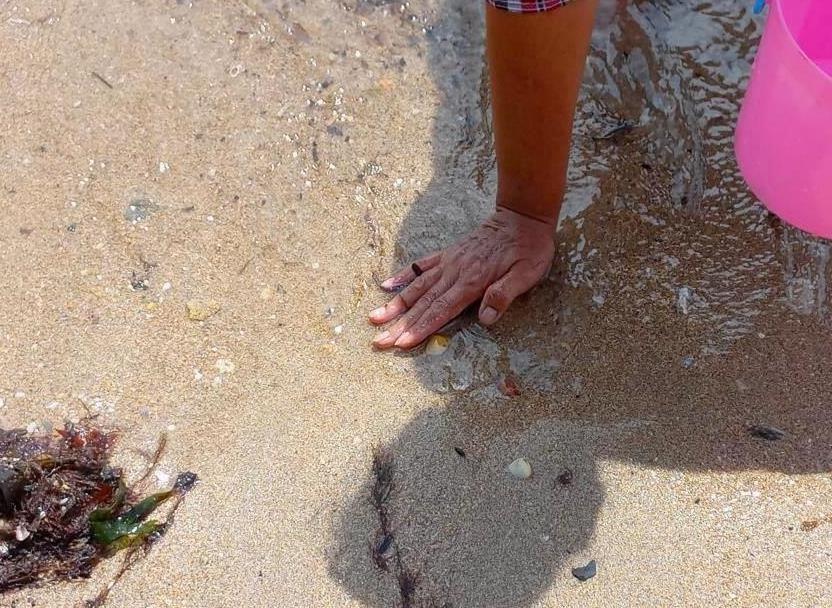
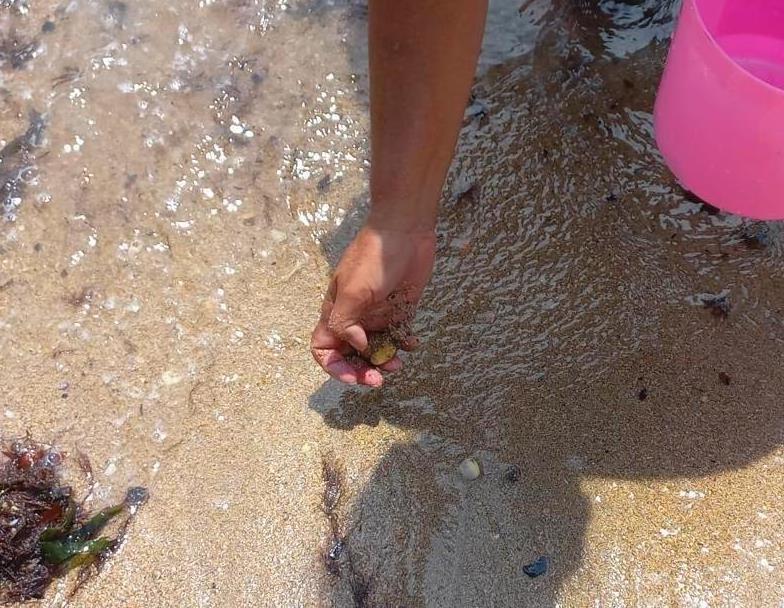
Use of Pipi clams in Thailand
Vongole clams in Italy, which I discussed in one of my earlier articles on this website, are similar in size, appearance, and taste to Pipi clams in Thailand.
In Italian cuisine, freshly steamed vongole clams are typically added to spaghetti, mixed with garlic, white wine sauce, and spices, and sprinkled with parmesan cheese.
Thai cuisine is different. They are either stir-fried with various herbs and spices or steam-boiled with a broth of coconut and spices.
But for my taste, the best way to eat them is outdoors next to a fire. Put them near hot coals and let them boil open. When foaming, take them out of the shells with pointed wooden chopsticks and sprinkle them with a drop of lime before eating. That’s how shell middens were created.
Lessons learned from collecting Pipi clams:
- Pipi clams are a common food found on tropical sandy beaches with good surf.
- They can be easily collected at low tide in the intertidal zone.
- The best way to eat them highly depends on the cultural preferences of each person.
Further readings about Bivalves on this website:
An oyster species growing on Mangrove trees
White mussels at the Namibian coastline
Black mussels at the Namibian coastline
Beachcombing for Vongole clams in Northern Italy
.



